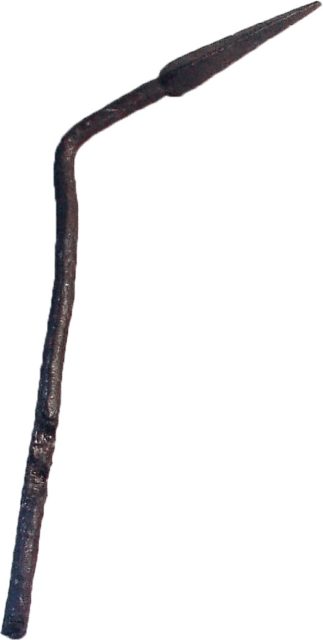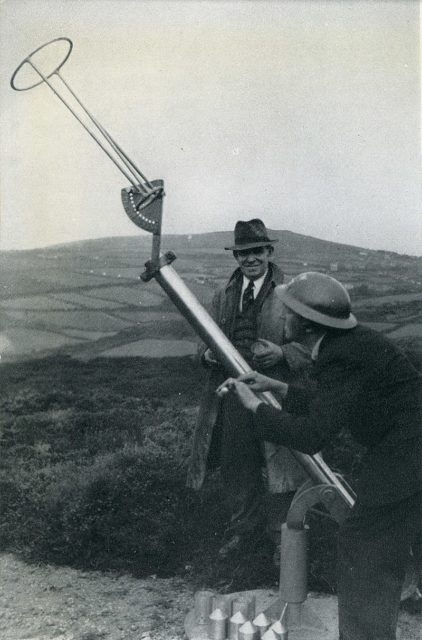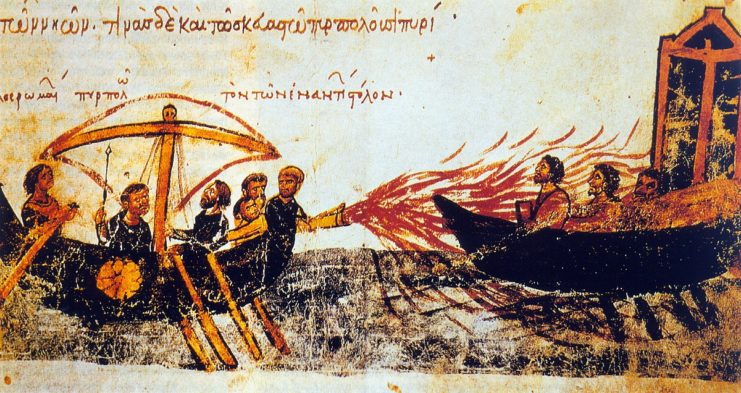Sometimes, no matter how tactically adept a military force may be, if an opponent suddenly shows up with a particularly advanced or capable weapon, it can quickly even the playing field. While most contemporary battles are fought with relatively similar equipment, both sides are usually in a desperate race to one-up each other.
For an example of the capabilities of a sufficiently powerful weapon, take 30 Spartan warriors. These troops trained for years and were some of the most elite soldiers for centuries. Now give a machine gun and plenty of ammunition to an untrained person. With a one-minute run-through of how the gun works, this total novice would likely win the engagement.
Weapons are an extremely important factor for a force’s success. Here are some of the most ingenious ones ever made. For this list we decided to focus on weapons that were cheap and easy to make while offering both offensive and defensive advances.
English Longbow

When the English created the longbow in the Middle Ages they gained a massively capable weapon. As the name implies, the bow is long – almost two meters long – and therefore extremely powerful. British archers used the longbow against the French at the Battle of Agincourt and despite being hugely outnumbered, managed to devastate French troops.
The bows were powerful enough to fire specially design arrows straight through the knights’ armor. Because of their wooden construction, there are no longbows around today from the medieval period, but their range was probably around 300 meters, depending on the archer and the arrows used.
The Pilum

The pilum was the Roman Empire’s take on the classic spear. Spears in some shape or form have been used for about as long as humans have existed. Even chimpanzees have been known to fashion spear-like tools! The spear is a simple yet effective weapon that can be used up close or at range, keeping the user out of the way of a sword or club-wielding enemy.
However, throwable spears, often called javelins, have one problematic flaw: they can be thrown back. The Roman Empire finally solved this problem with the pilum. Between the hardened business end of the pilum and the spear shaft was a long, thin shank made of soft metal. The pilum flew straight when launched, but the shank would bend on impact. The bent spear now couldn’t be thrown back.
Holman Projector

Early in WWII Britain was at serious risk of a German invasion. Merchant shipping was crucial to keep its military going and population fed, but the Germans were causing havoc against these ships. The country had very little spare resources to arm these vessels with conventional weapons and equally few men to mount them.
To give the vulnerable ships something to fight back with, Holmans, a Cornish tool manufacturer, invented the Holman Projector. This device was a pneumatic mortar that used steam or compressed air to fire explosive projectiles at incoming aircraft. As the aircraft had to come in low and relatively slow to increase their chances of scoring a hit, the Holman Projector could provide some form of defense, even if it was mostly a case of something is better than nothing.
The idea was the projectors would either scare an attacking aircraft off or force it to attack from a higher altitude, increasing the chances of a miss.
Greek Fire

When in doubt, plain old fire has and probably always will be a useful tool, but the Byzantine Empire made it even better. During naval clashes fire was one of the most valuable weapons, as it worked against the highly flammable ships of the day. The outcome of engagements was often decided by how effectively fire was used. The Byzantine Empire dialed their use of fire down to a fine art.
They used the imaginatively named Greek Fire, a primitive flame-throwing weapon that spewed fire which their enemies couldn’t stop. Although little is known about the device, including how it was made or what the mixture even consisted of, many accounts speak of the weapon. Allegedly the fire would still burn on water and was virtually impossible to extinguish.